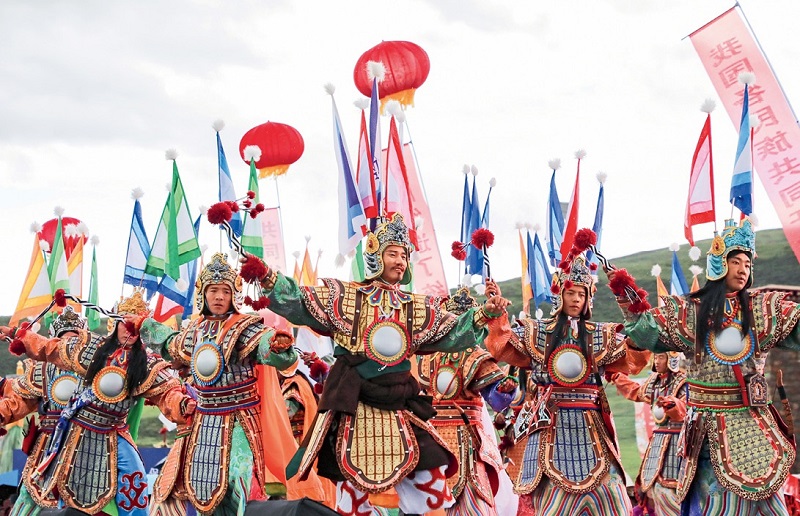
A Gesar-themed Tibetan opera is performed at the National Gesar Culture (Guoluo) Ecological Protection Area in Dari County, Guoluog Tibetan Autonomous Prefecture, Qinghai Province on August 25, 2025.
King Gesar is an epic that is circulated among the Tibetan, Tu and Mongolian ethnic groups living in the Qinghai-Xizang Plateau and surrounding regions. This folk literary work recounts the heroic deeds of the ancient Tibetan hero King Gesar, who fearlessly led his armies through numerous battles and brought peace and prosperity to his people.
The epic of King Gesar is composed of more than 20 million words in over one million lines of verses contained in 170 volumes, making it one of the world’s longest epics. Passed down for over a millennium through recited oral chants, its content draws on ancient Tibetan myths, legends, folktales, ballads, and proverbs. The epic is also an encyclopedia of ancient Tibetan society, encompassing knowledge of history, society, nature, science, religion, ethics, customs, culture, and art. In 2006, Gesar was included in China’s first national list of intangible cultural heritage items, and in 2009, it was added to UNESCO’s Representative List of the Intangible Cultural Heritage of Humanity.
This epic has also transcended ethnic boundaries, spreading widely among Mongolian, Tu, and other ethnic groups. It serves as a historical witness of cultural connectivity among various ethnic groups in China. In the Tu ethnic group community in southern Gansu Province adjacent to Tibetan communities, a unique bilingual chant in both Tu and Tibetan languages can be found; the epic has also spread beyond China to Mongolia, Russia, India, Pakistan, Nepal, and Bhutan. Throughout its transmission in history, the epic itself has also been enriched by absorbing diverse local cultural elements of the region.
Today, during major festivals, Tibetan communities still follow the tradition to perform the Epic of King Gesar. In recent years, local governments have been exploring new preservation methods – sending professional researchers to conduct field research in pastoral areas, recording videos, audios, and transcriptions of local singers’ performances. Training centers have also been established to cultivate a new generation of Gesar performers, ensuring the continual preservation of this invaluable heritage.